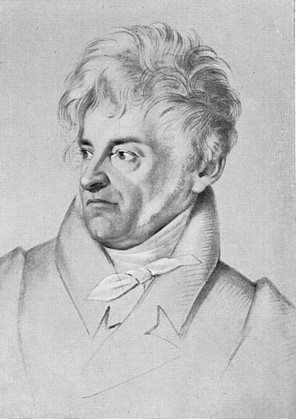Lessico
Eduard Joseph d'Alton

Eduard
Joseph d'Alton (August 11, 1772 – May 11, 1840) was a German engraver and
naturalist who was a native of Aquileia![]() (today
part of Italy). He studied in Vienna, and later worked in several locations,
including Weimar and Jena. Afterwards he moved to Würzburg, where he worked
with embryologist Christian Heinrich Pander
(today
part of Italy). He studied in Vienna, and later worked in several locations,
including Weimar and Jena. Afterwards he moved to Würzburg, where he worked
with embryologist Christian Heinrich Pander![]() (1794–1865). Later he taught art history and architectural theory at the
University of Bonn, and in 1827 became professor ordinarius of art history at
Bonn. He was the father of anatomist Johann Samuel Eduard d'Alton
(1803–1854). From 1831 to 1840, d'Alton was a member of the Prussian Academy
of the Arts, and one of his famous students in Bonn was Karl Marx.
(1794–1865). Later he taught art history and architectural theory at the
University of Bonn, and in 1827 became professor ordinarius of art history at
Bonn. He was the father of anatomist Johann Samuel Eduard d'Alton
(1803–1854). From 1831 to 1840, d'Alton was a member of the Prussian Academy
of the Arts, and one of his famous students in Bonn was Karl Marx.
Eduard d'Alton is largely remembered for his anatomical and zoological engravings and etchings. He collaborated with Christian Pander on Vergleichende Osteologie, which was a series of monographs in the field of comparative osteology. In these works, d'Alton created engraved plates which portrayed the skeletal framework of numerous species, including the extinct megatherium, a genus of elephant-sized ground sloths endemic to Central America and South America that lived from the Pliocene through Pleistocene. Also, in Pander's 1817 treatise Beiträge zur Entwicklungsgeschichte des Hühnchens im Eye, d'Alton produced the artistic images involving the embryonic development of a chicken.